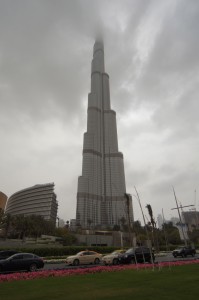There is a belief in advertising to always try and make a positive claim about your product. That’s not a bad thing, if your claim has a consumer benefit like strongest, safest or most reliable.
However a number of brands, having achieved market leader status, rely on being ‘biggest’ for their claim.
They forgot what got them there and just reflected on their achievements, in the belief that this is important to the consumer.
The trouble with this strategy is that sooner or later their position at the top of the ‘biggest’ tree will be challenged by someone else.
Then they become second biggest and who wants to be in second place?
Dubai, in the United Arab Emirates, boasts a lot of ‘biggest’ things.
The world’s biggest indoor ski slope.
The world’s biggest indoor aquarium with the world’s largest acrylic viewing window.
The world’s largest shopping mall. In fact Dubai will soon have five of the seven biggest shopping malls in the world.
And of course, they have the Burj Khalifa, the world’s tallest building.
In marketing terms this strategy might doom them to a certain fall. But their ‘biggest’ positioning has also become their strategy.
When you build a city out of the desert, on an area that 60 years ago had little more than a few houses, camels and date palms you need to do something spectacular.
When oil was discovered in 1966 the then ruler of Dubai, Sheikh Rashid, used the money to start a development program that would eventually lead to modern day Dubai.
They needed a city that would attract attention and investment from all over the world.
Their way of creating a unique product was to go with a strategy of ‘big’
They didn’t become big and then fall back on that, they started off with the idea to be big.
The entire city is a work in progress, building bigger and bigger things. I wonder how long this race to collect the most Guinness world records can last?










